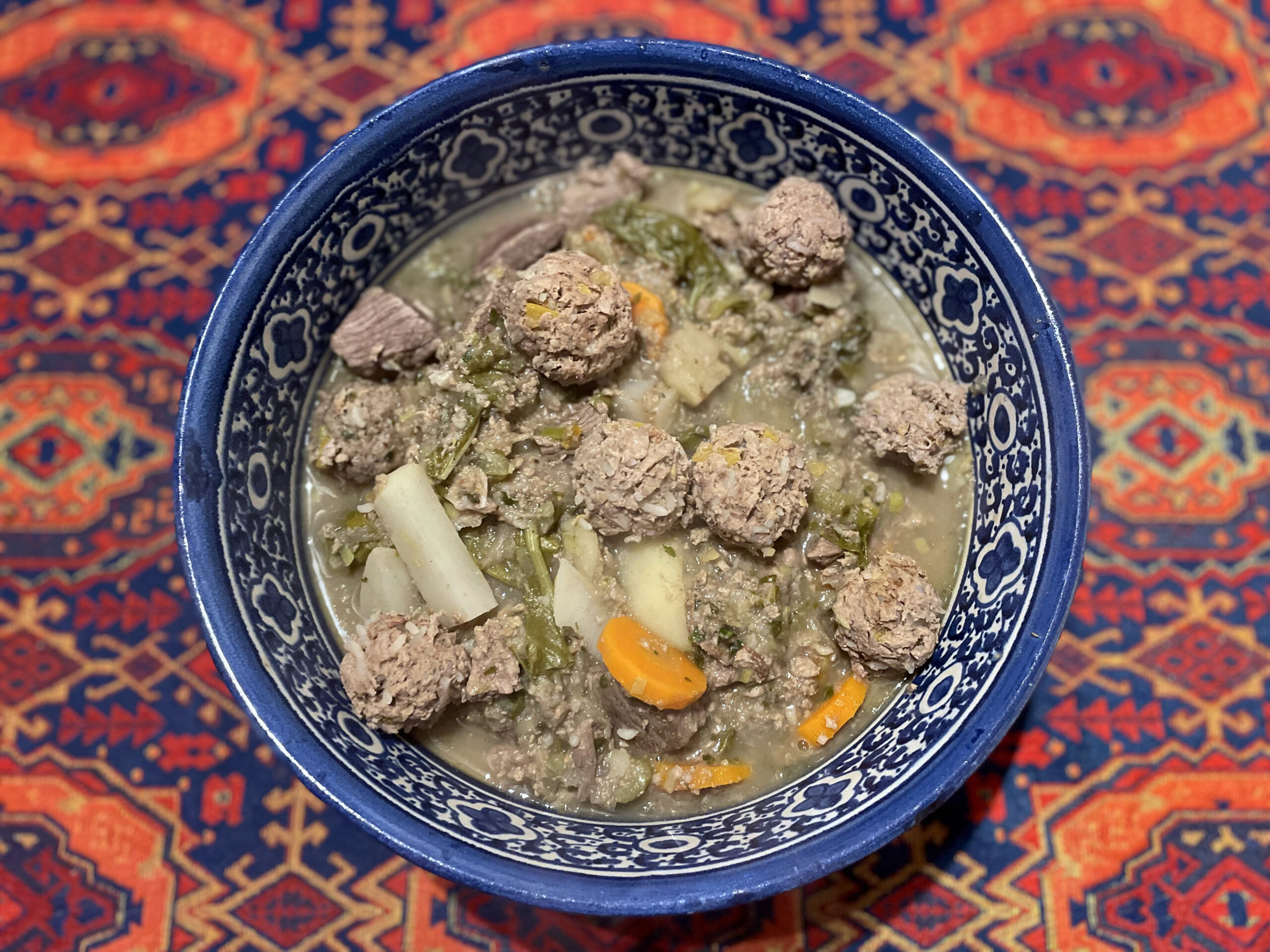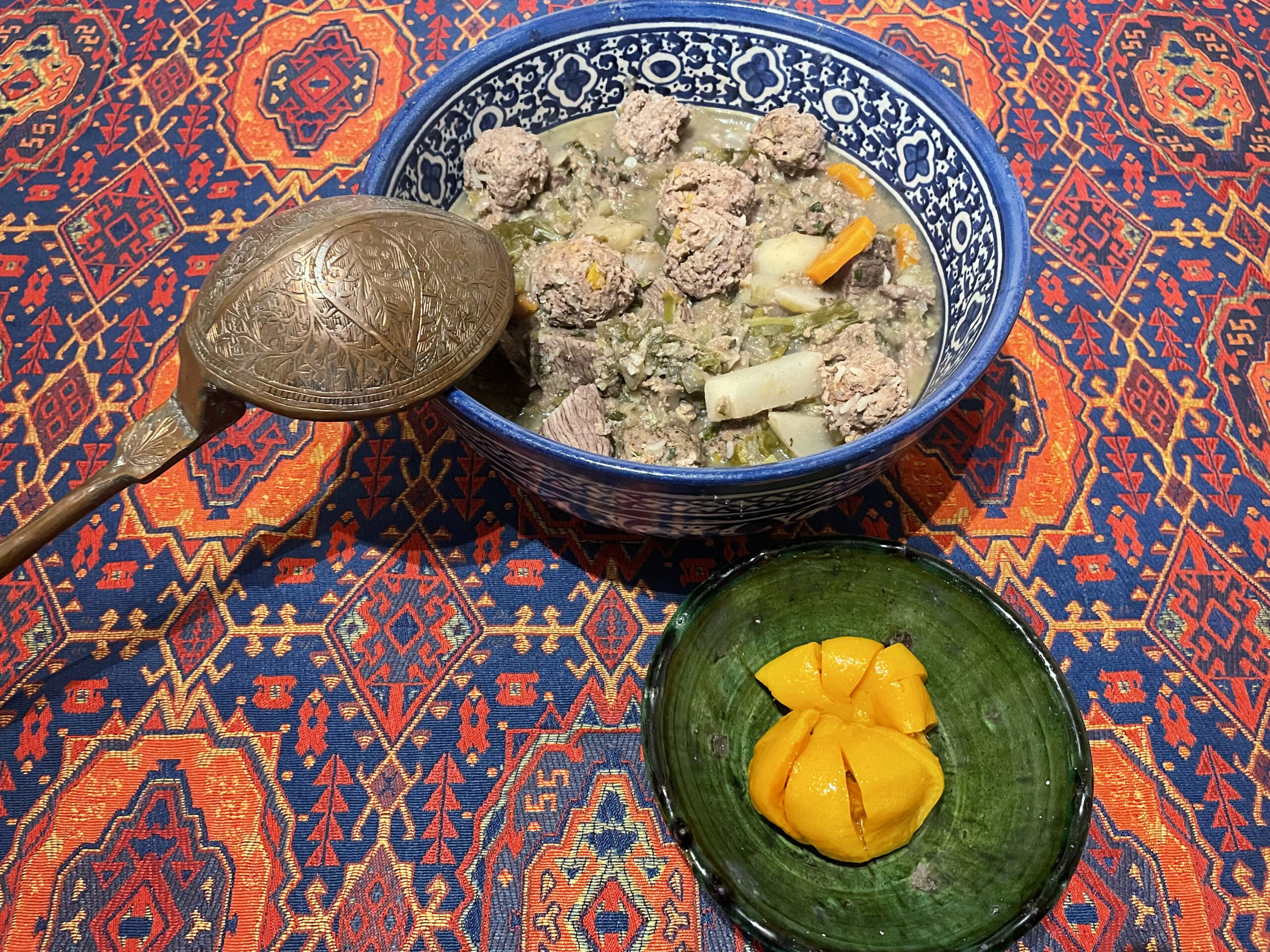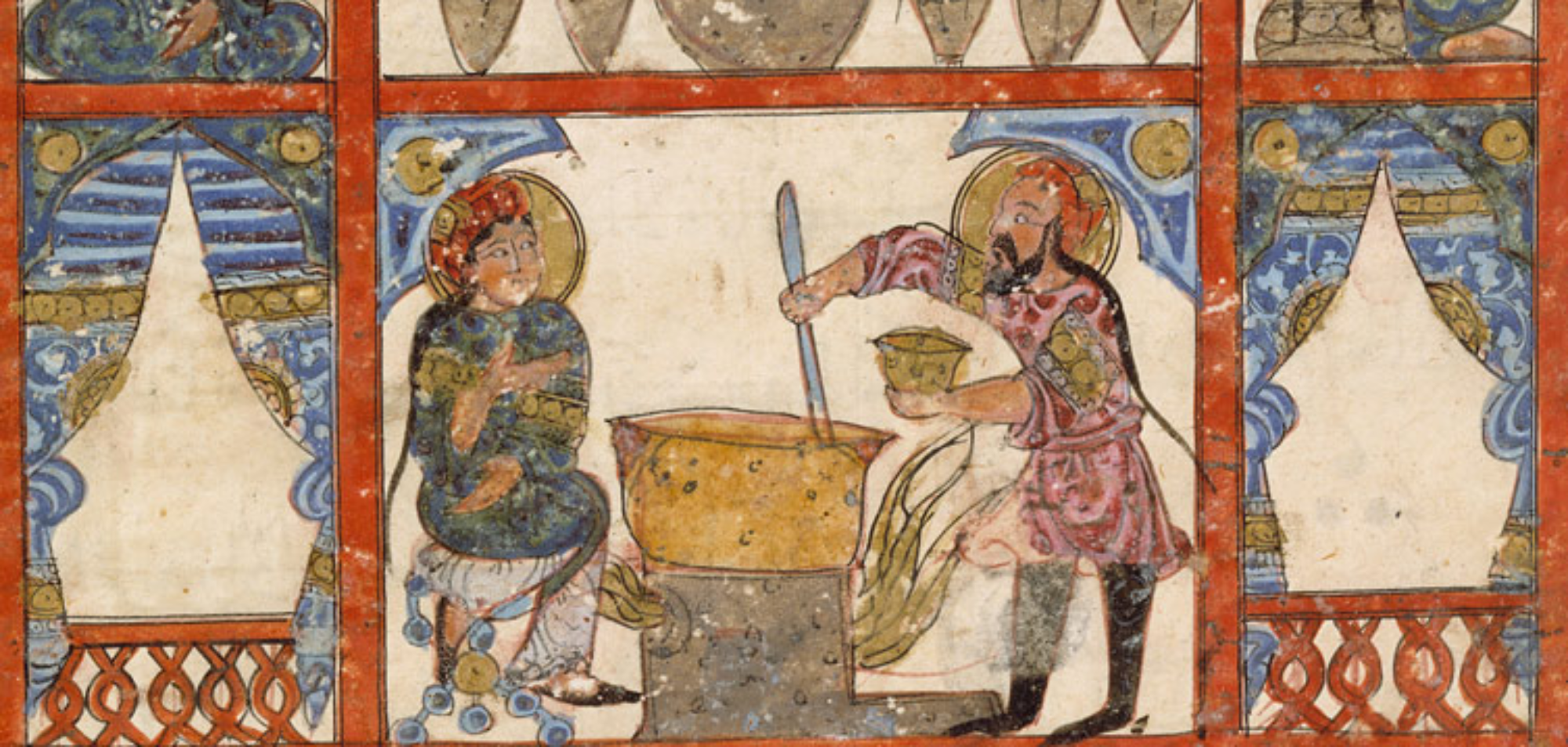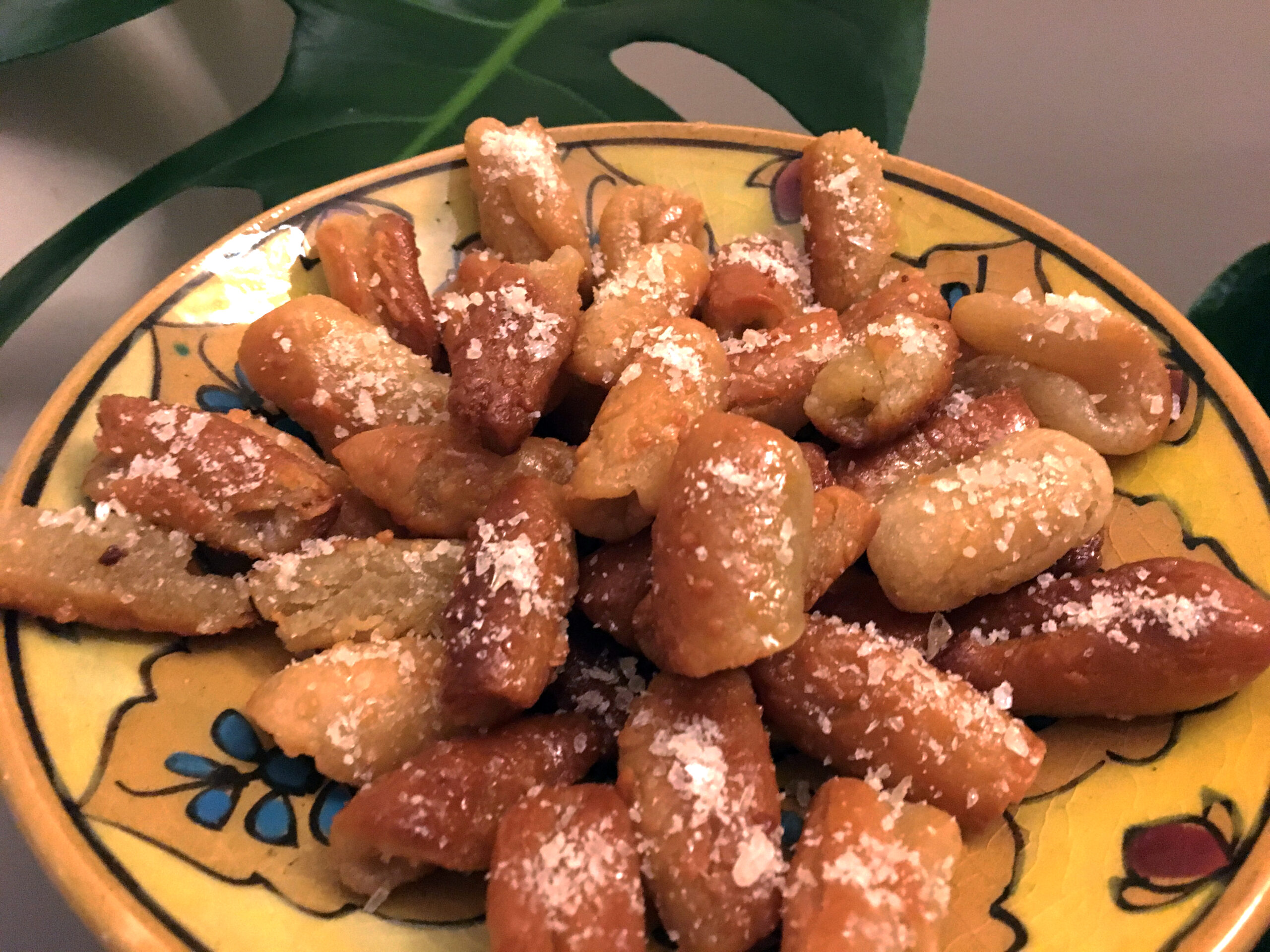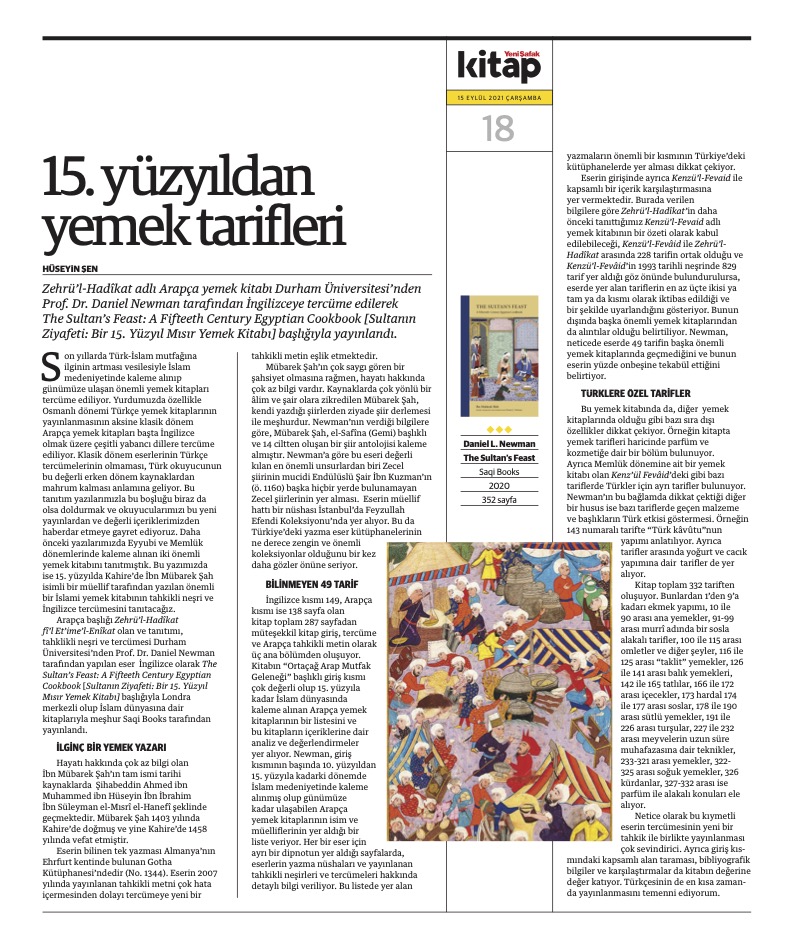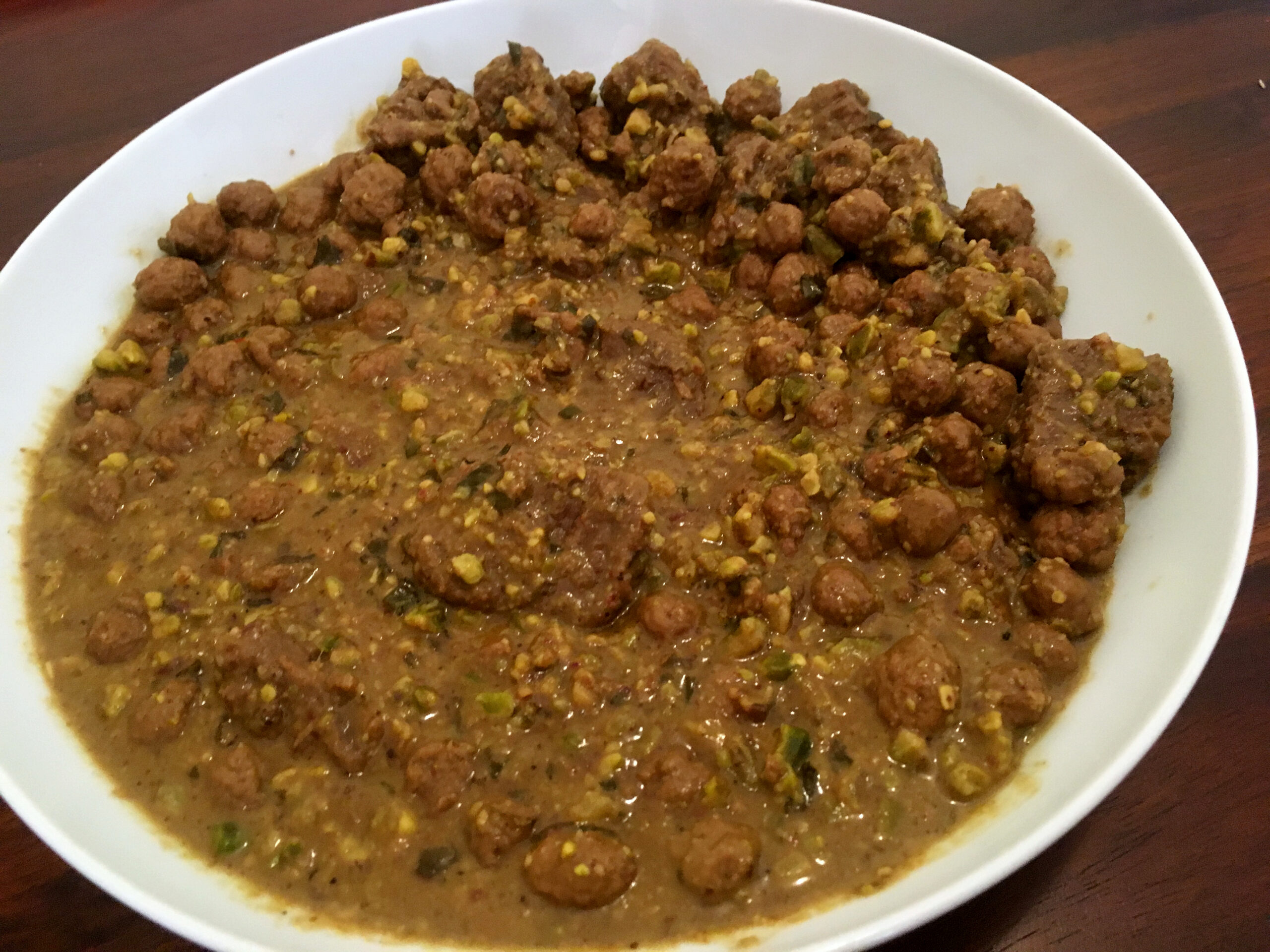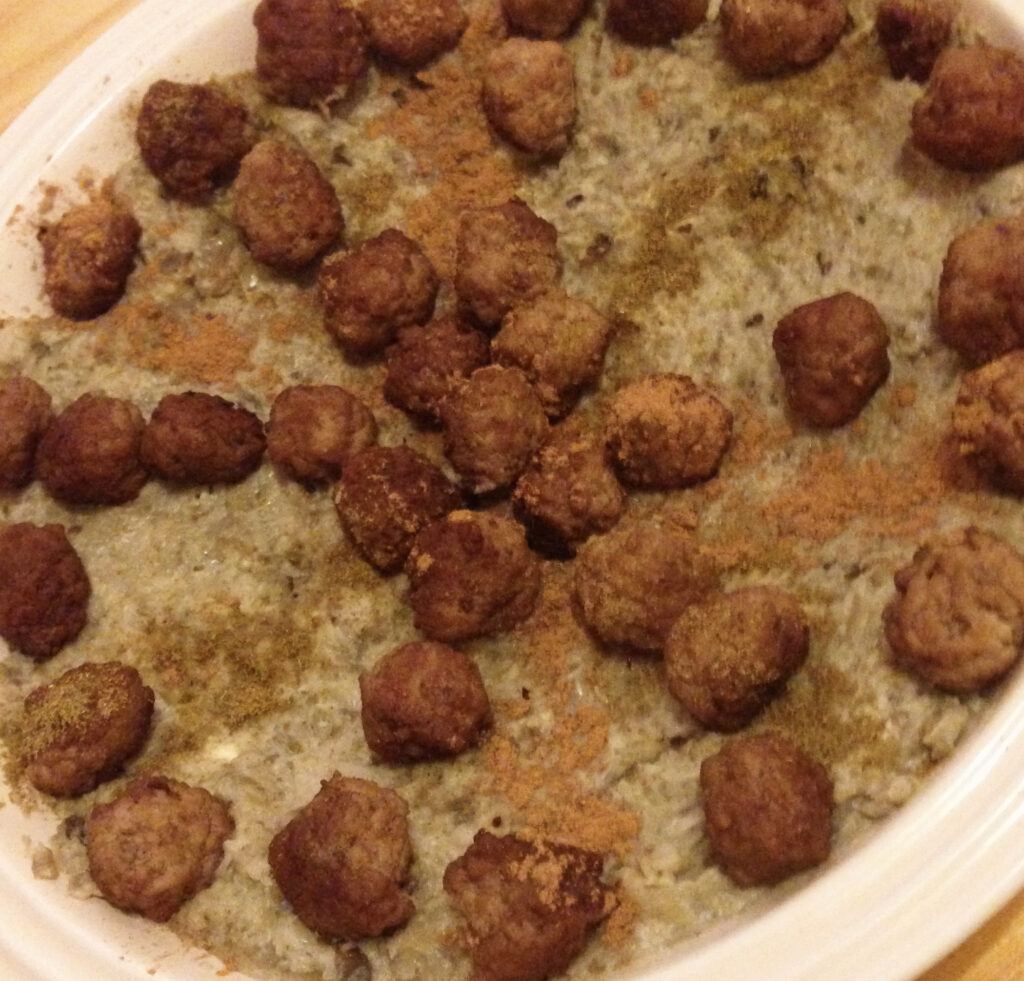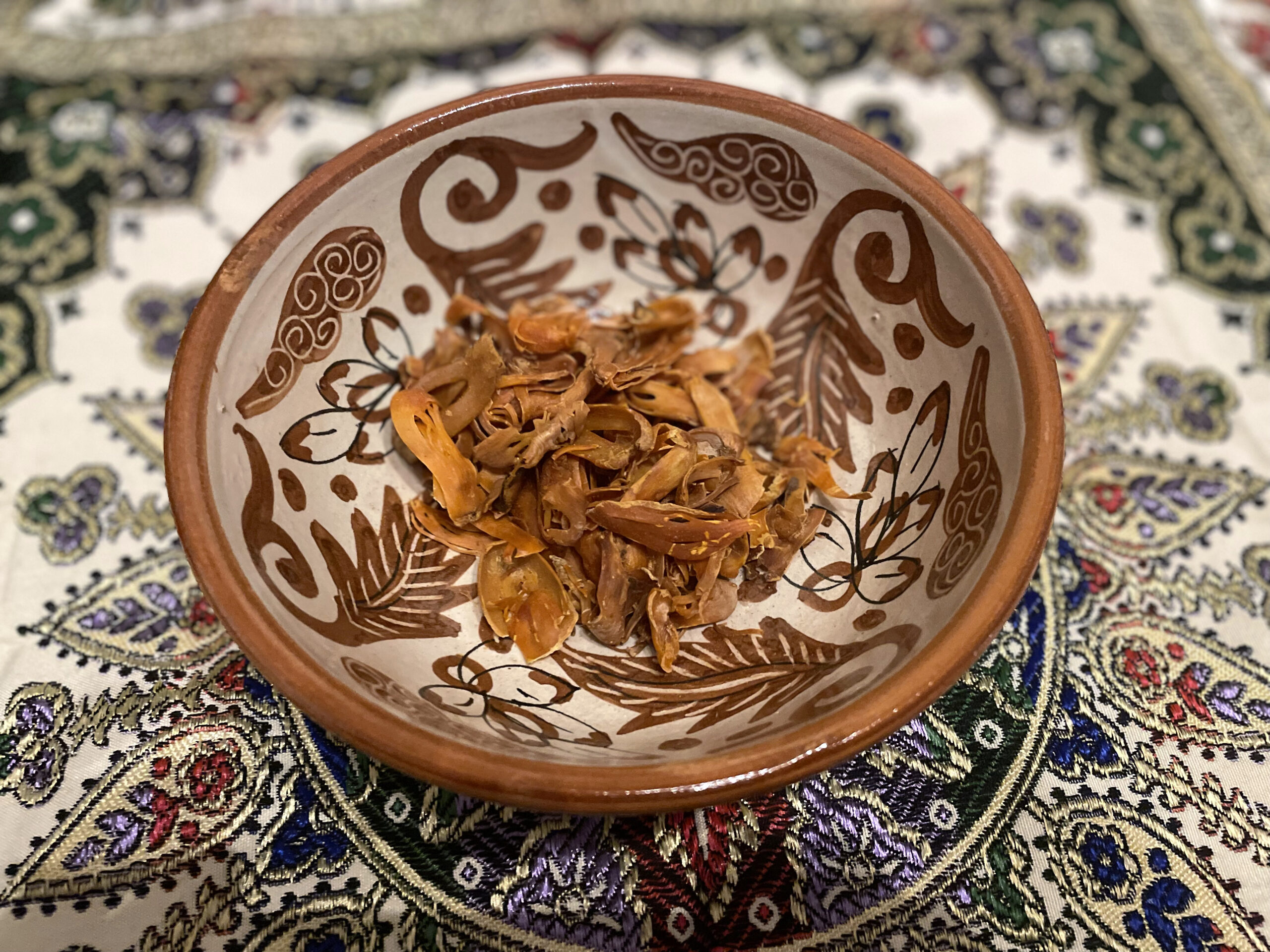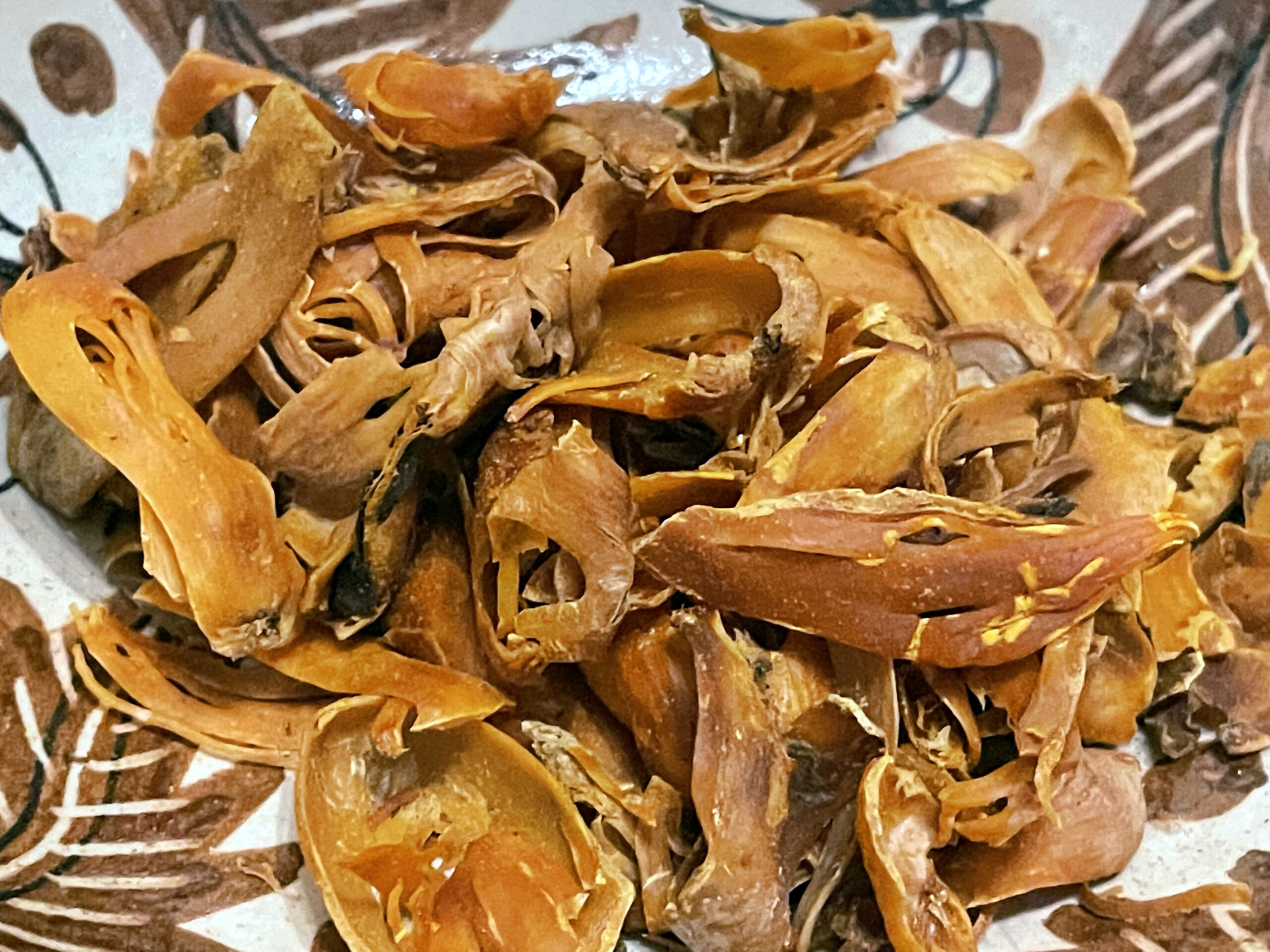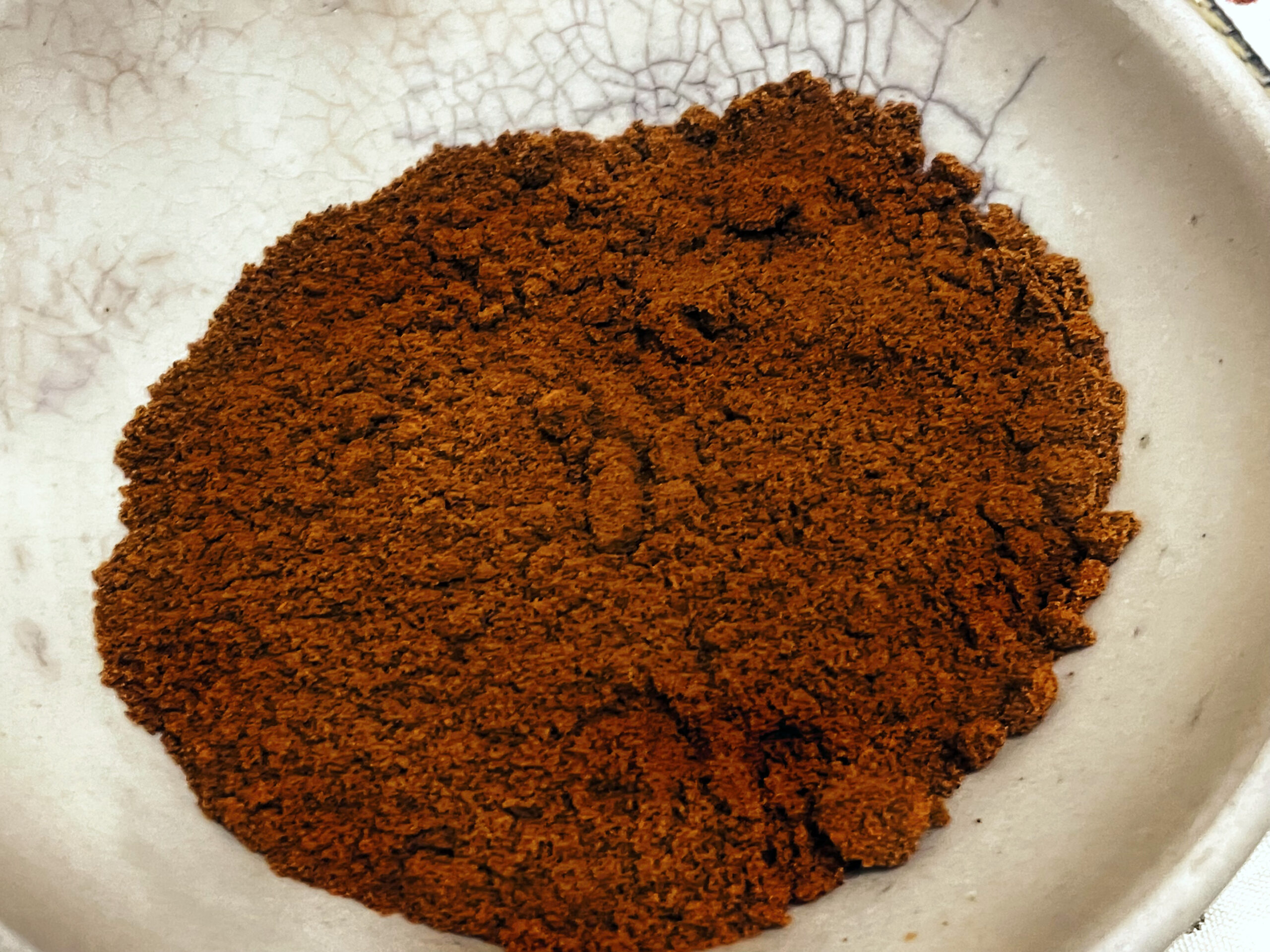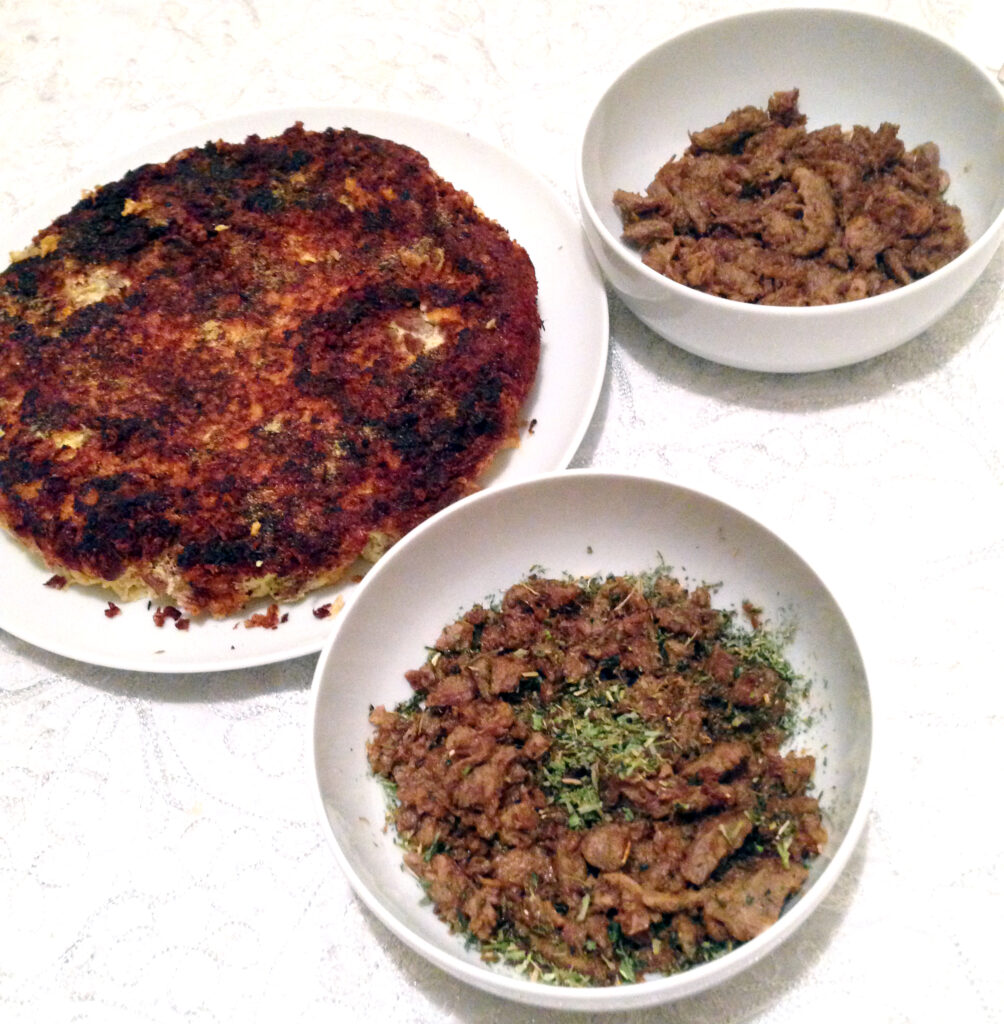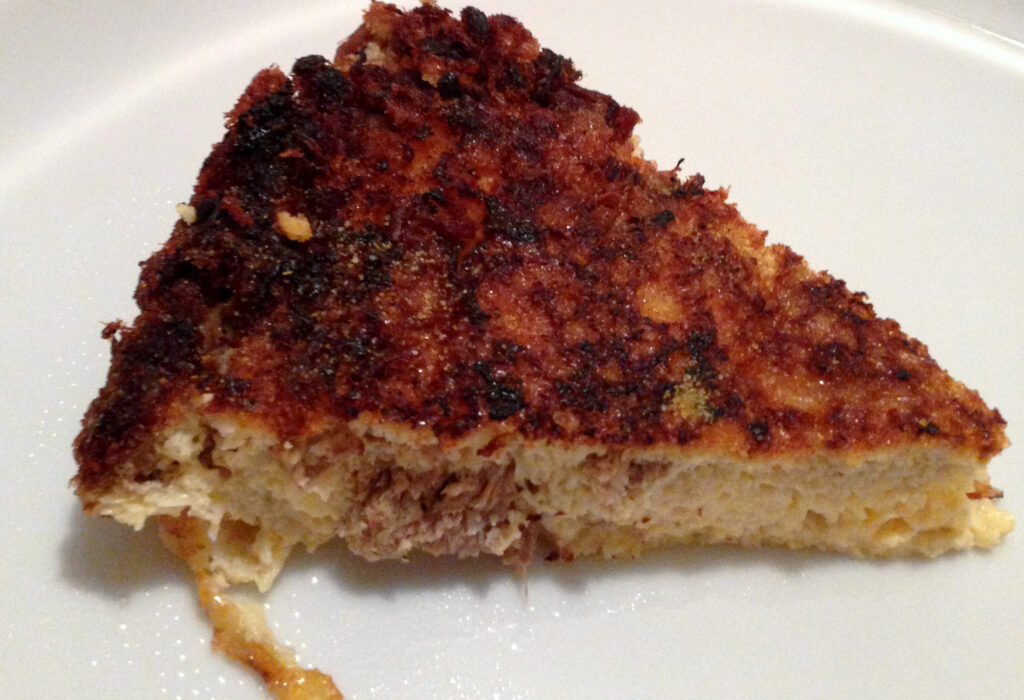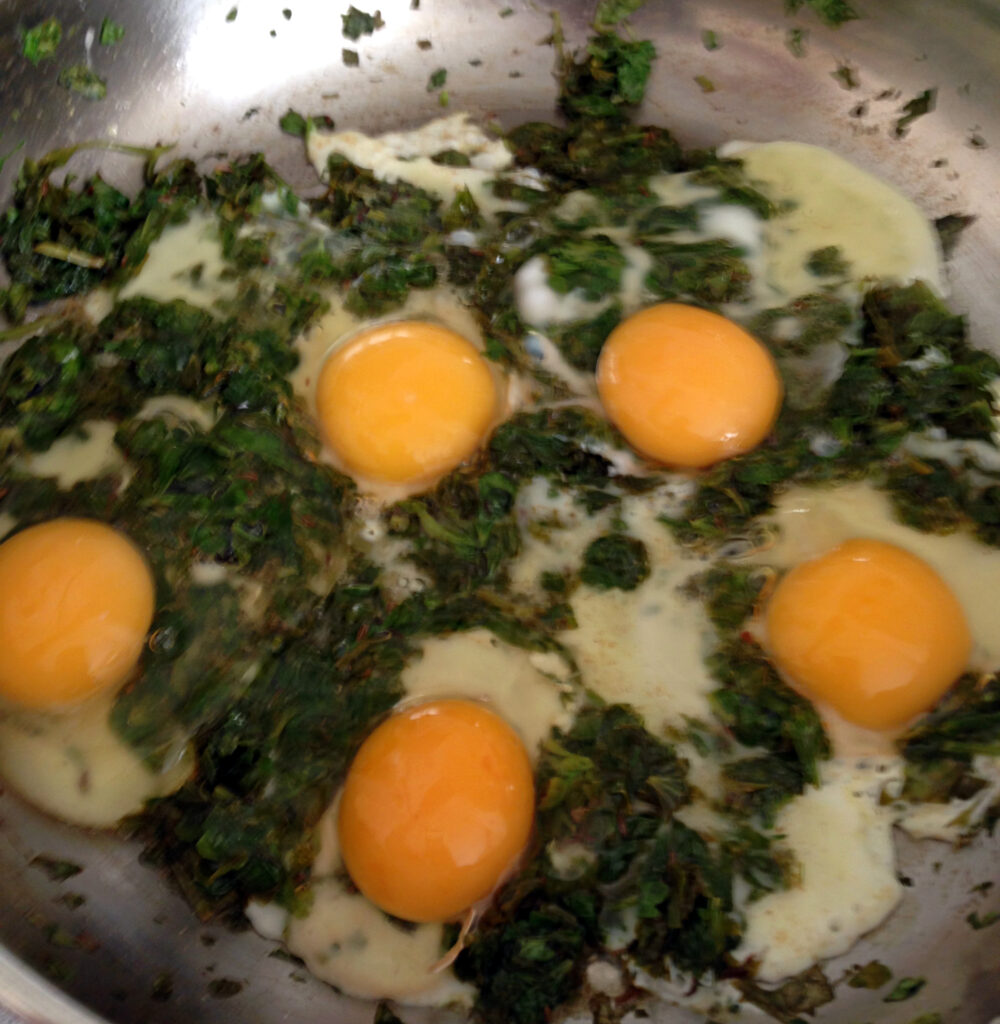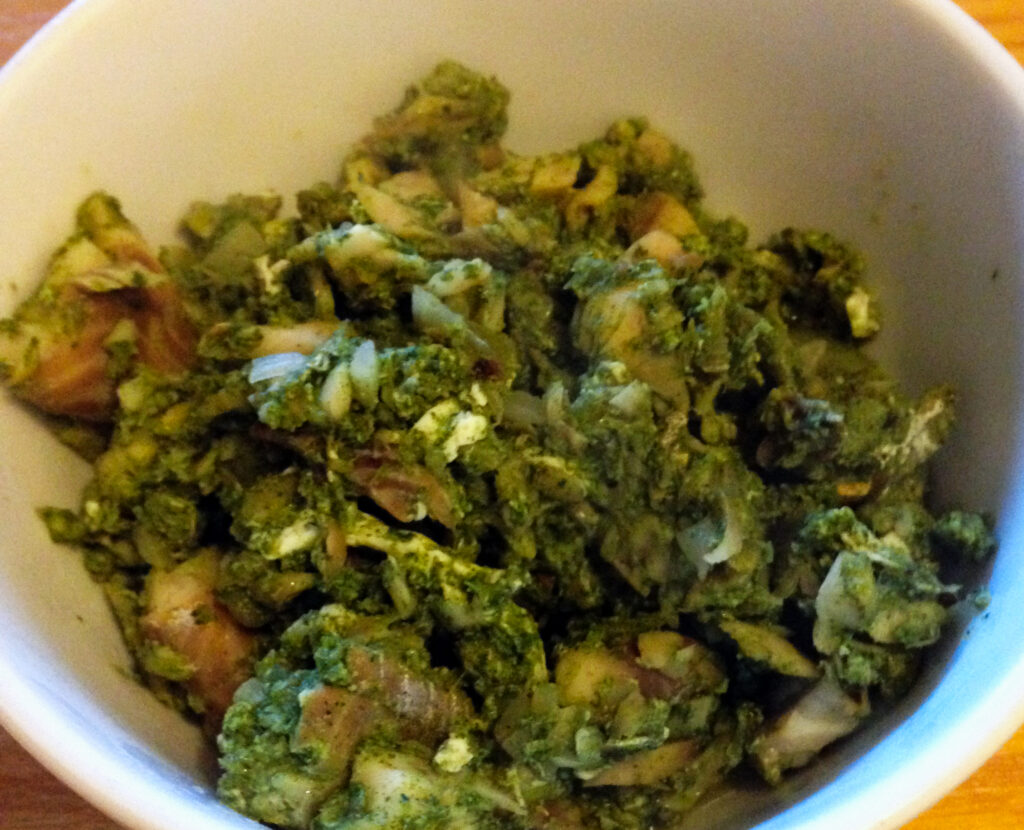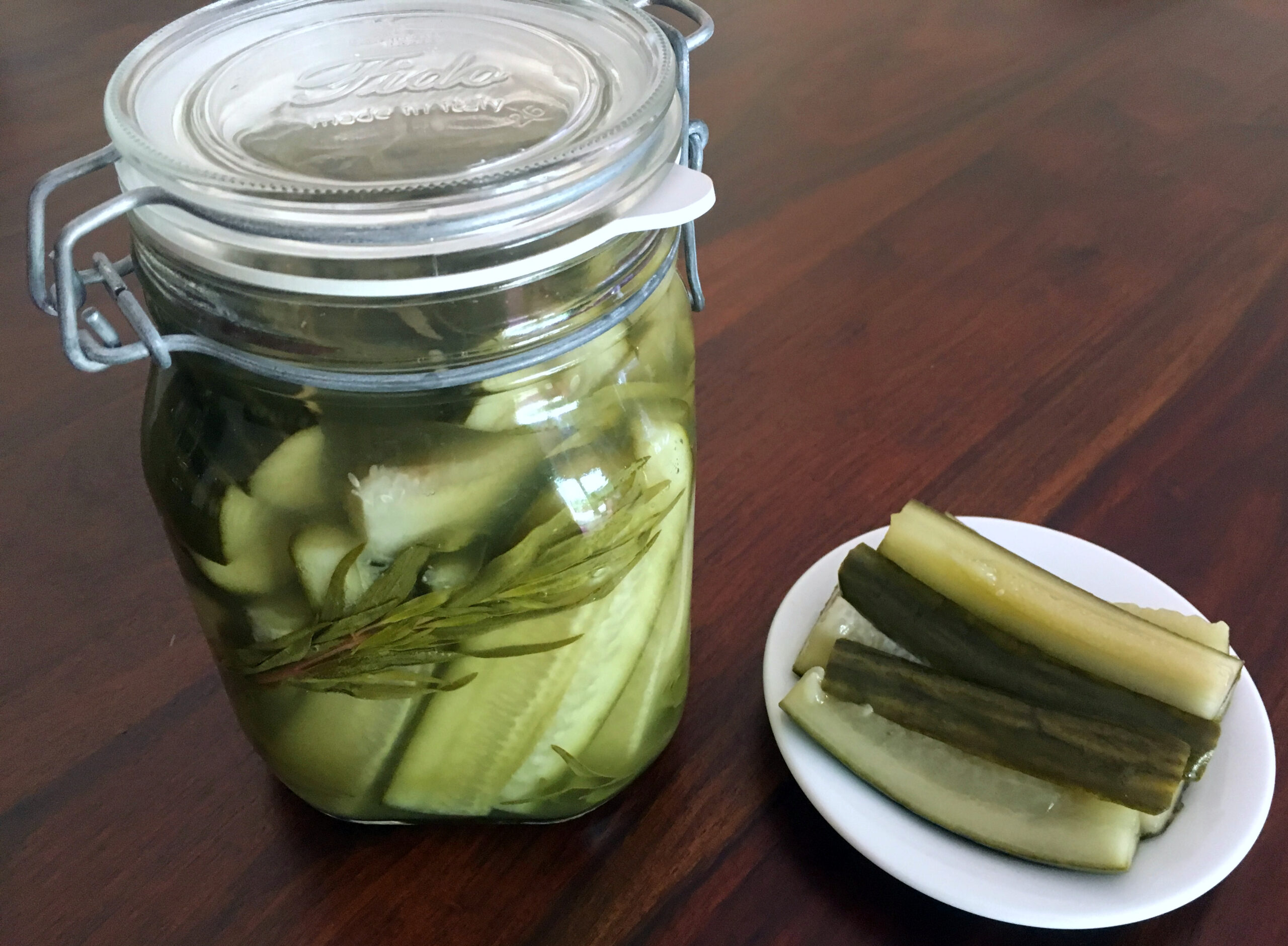This is a 13th-century Syrian recipe of a dish said to be a favourite of the caliph Harun al-Rashid, who was particularly partial to the taste of sumac. It is made by first soaking the berries in water and then kneading the sumac with parsley, rue, breadcrumbs, thyme, aṭrāf al-ṭīb spice blend, lemon juice, sesame paste, yoghurt, and pounded toasted walnuts to make a stuffing, to which pieces of pickled lemon are added. The next crucial ingredient is (lamb) meat (chopped) and meatballs, which are kneaded with rice and chickpeas. The dish is rounded off with a variety of vegetables, such as chard stalks, eggplant, gourd, carrots, turnips and leeks. The result truly is a delight fit for a caliph!
